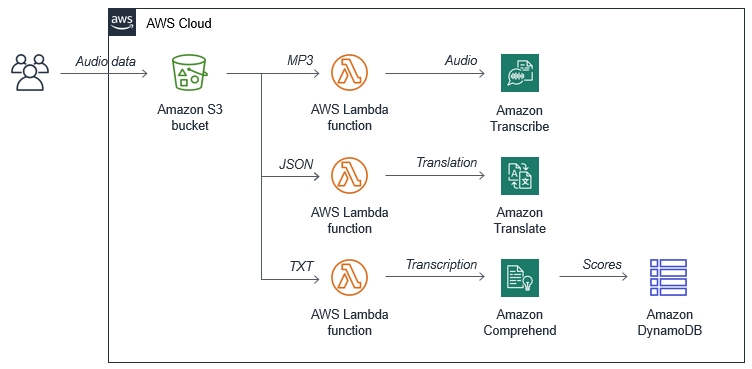AWS Compute Blog
Tag: serverless
Automating scalable business workflows using minimal code
In this blog post, I show how to use a serverless application to build and manage enterprise workflows at scale. This minimal-code solution is highly scalable and flexible, and can be modified easily to meet your needs.
Building well-architected serverless applications: Understanding application health – part 2
This series of blog posts uses the AWS Well-Architected Tool with the Serverless Lens to help customers build and operate applications using best practices. In each post, I address the nine serverless-specific questions identified by the Serverless Lens along with the recommended best practices. See the Introduction post for a table of contents and explaining the example application. Question OPS1: How […]
Translating documents at enterprise scale with serverless
Developing a scalable translation solution for thousands of documents can be challenging using traditional, server-based architecture. Using a serverless approach, this becomes much easier since you can use storage and compute services that scale for you.
Visualize user behavior with Auth0 and Amazon EventBridge
In this post, I show how to capture user events and monitor user behavior by using the Amazon EventBridge partner integration with Auth0. This enables you to gain insights to help deliver a more customized application experience for your users. Auth0 is a flexible, drop-in solution that adds authentication and authorization services to your applications. […]
Creating a searchable enterprise document repository
September 8, 2021: Amazon Elasticsearch Service has been renamed to Amazon OpenSearch Service. See details. Enterprise customers frequently have repositories with thousands of documents, images and other media. While these contain valuable information for users, it’s often hard to index and search this content. One challenge is interpreting the data intelligently, and another issue is […]
Building well-architected serverless applications: Understanding application health – part 1
This series of blog posts uses the AWS Well-Architected Tool with the Serverless Lens to help customers build and operate applications using best practices. In each post, I address the nine serverless-specific questions identified by the Serverless Lens along with the recommended best practices. See the Introduction post for a table of contents and explaining […]
Building well-architected serverless applications: Introduction
The following posts are a multi-part series addressing each of the questions within the Serverless Lens of the Well-Architected Tool. Series Episodes: Building well-architected serverless applications Introduction Operational Excellence: Understanding serverless application health Out of the box metrics and alerts; structured and centralized logging Custom metrics and distributed tracing Operational Excellence – Approaching serverless application […]
AWS Step Functions support in Visual Studio Code
The AWS Toolkit for Visual Studio Code has been installed over 115,000 times since launching in July 2019. We are excited to announce toolkit support for AWS Step Functions, enabling you to define, visualize, and create your Step Functions workflows without leaving VS Code. Version 1.8 of the toolkit provides two new commands in the […]
Announcing AWS Lambda support for .NET Core 3.1
This post is courtesy of Norm Johanson, Senior Software Development Engineer, AWS SDKs and Tools. From today, you can develop AWS Lambda functions using .NET Core 3.1. You can deploy to Lambda by setting the runtime parameter value to dotnetcore3.1. Version 1.17.0.0 AWS Toolkit for Visual Studio and version 4.0.0 of the .NET Core Global Tool […]
Converting call center recordings into useful data for analytics
Many businesses operate call centers that record conversations with customers for training or regulatory purposes. These vast collections of audio offer unique opportunities for improving customer service. However, since audio data is mostly unsearchable, it’s usually archived in these systems and never analyzed for insights. Developing machine learning models for accurately understanding and transcribing speech […]









